Let’s not sugarcoat it, folks. The world is getting more dangerous by the day. We’ve seen the breakdown of civility in major cities, we’ve watched riots, looting, and violence play out in real time on our screens, and it doesn’t take a genius to see where this is all heading. If you’re like me, you’ve probably already stocked up on food, water, and ammo. But what good is all that if your home is as penetrable as a cardboard box?
It’s time to take the next step in serious preparedness: bulletproofing your home.
Now, before you start imagining military-grade bunkers and secret government compounds, let me be clear. We’re not talking about turning your suburban home into Fort Knox. What we are talking about is creating strategic, layered protection that can turn your home into a fortress without raising red flags or breaking the bank.
Why Make Your Home Bulletproof?
Ask yourself this. If SHTF tomorrow and angry mobs were on your street, how safe would you feel behind a few sheets of drywall and vinyl siding? Most homes in the U.S. are built for comfort, not defense. And while the idea of armed invaders might sound far-fetched to your average neighbor, we know better.
Whether it’s civil unrest, a home invasion, or government overreach (yes, I said it), the first line of defense is the walls around you. Bulletproofing your home isn’t about paranoia. It’s about readiness.
Step 1: Understand the Threat Level
First, let’s get real about what kind of firepower you’re protecting against. The average looter or criminal won’t be carrying armor-piercing rounds. Most home invasions involve handguns or shotguns. Think 9mm, .45 ACP, or 12-gauge. If you’re in a rural area or expecting military-style threats (hey, it’s happened before), you might want to prepare for rifles like AR-15s or AK-47s.
To help visualize what different materials can stop which rounds, here’s a simple threat chart:
| Caliber | Common Weapon | Can Penetrate | Stopped By |
| 9mm | Handgun | Drywall, Wood Paneling | Level IIIA Panel, Sandbags, Bookshelves |
| .45 ACP | Handgun | Drywall, Plywood | Level IIIA Panel, AR500 Steel |
| 12-Gauge Slug | Shotgun | Most walls, thin metal | Level III Panel, Sand-Filled Walls |
| 5.56 NATO | AR-15 Rifle | Brick, Drywall, Most Wood | Level III Steel, Concrete Block |
| 7.62x39mm | AK-47 Rifle | Most construction materials | Level III+ or IV Plates, Sandbags |
Understanding the threat informs your strategy. There’s no one-size-fits-all approach. It’s about layering your defenses smartly. There’s no one-size-fits-all approach. It’s about layering your defenses smartly.
Step 2: Reinforce Entry Points
The weakest parts of any home are the doors and windows. Here’s how you fix that:
Doors:
- Replace hollow-core doors with solid wood or steel doors.
- Reinforce the frame with a steel door jamb reinforcement kit (StrikeMaster II or similar).
- Install a heavy-duty deadbolt and reinforce strike plates with 3″ screws.
- For serious protection, consider ballistic fiberglass panels installed behind the door or within the wall.
Windows:
- Apply shatter-resistant film. It won’t stop bullets, but it slows entry.
- Install steel window security bars or better yet, decorative wrought iron that doesn’t scream “prison.”
- Consider bullet-resistant glass or polycarbonate panels for ground-level windows. Polycarbonate (like Lexan) is pricey but extremely effective.
I’ve discovered someone who was able to teach me all that, plus how to turn your home into an uninviting fortress, from the edge of your property all the way to your bedroom door. These are tactics that could stop trained soldiers and terrorists. Now imagine what they’ll do to a desperate, unorganized looter.
Grab a copy of A Navy SEAL’s Bug-In Guide and discover which are the biggest home security mistakes you’re probably making right now and how to silence a noisy generator so it doesn’t draw unwanted attention!
Step 3: Wall Reinforcement
This is where most people tap out, but not us.
Drywall and 2x4s won’t stop much of anything. To make your walls bullet-resistant:
- Ballistic Panels: Level 3A panels can stop most handgun rounds. Level III or IV panels can stop rifle rounds but are expensive and heavy. Install them in panic rooms or key areas.
- Steel Sheets: One-eighth to one-quarter inch AR500 steel mounted between studs will stop most threats. It’s cheaper than ballistic panels and easier to source locally.
- Sand or Gravel Walls: Old-school but effective. Build a secondary interior wall filled with sandbags. It’s ugly, but if you’re serious, it works.
Step 4: Create a Safe Room
You don’t need a mansion to have a panic room. A reinforced closet, basement corner, or even a master bedroom can be retrofitted into a last-resort sanctuary.
What it needs:
- Bullet-resistant walls and door
- Independent communication (burner phone, CB radio)
- Water, snacks, med kit, firearm, ammo
- Ventilation that doesn’t compromise security
You want a place where you can wait out an intrusion or make your last stand if it comes to that.
Step 5: Use Landscaping as Defense
Yes, you can bulletproof your property before they get to the front door. Think of your landscaping as the first perimeter of your defensive plan.
- Thorny bushes under windows make sneaky entry painful. Consider plants like hawthorn, pyracantha, or barberry. They grow dense and aggressive.
- Gravel paths crunch loudly underfoot, making it hard for intruders to approach silently. Place them beneath windows, along fence lines, and leading up to entrances.
- Earth berms or raised garden beds not only beautify your yard but also serve as excellent bullet deflectors. A thick wall of soil can slow or stop rounds from lower-caliber firearms. Position them in front of ground-level windows or as barriers along driveways.
- Strategic fencing: Tall, solid fences obscure your home’s layout and activity. Go for steel or composite fencing over wooden pickets. Reinforce with concrete footing to prevent ramming or digging. Add trellises or climbing plants for visual camouflage.
- Trees and large shrubs can be used as natural cover, especially when grouped or placed strategically. Choose species with thick trunks and dense foliage. They won’t stop bullets, but they can disrupt line of sight and force an attacker into less favorable angles.
- Rock walls or boulders placed near entry points not only look rustic and decorative but also serve as ballistic deflectors and vehicle barriers.
Use your yard to send a message: This property is not easy to approach, not easy to see into, and certainly not easy to assault. Every step an intruder takes should expose them, slow them, or make them think twice.
Look at how the Amish have been doing it for ages: low-key, but rock-solid. Their homes are tucked way back from the road, hidden behind thick brush, tall trees, or heavy-duty fences that scream ‘stay out’ to anyone sniffing around.
Those solid oak doors and shutters? They lock up tight, turning a simple farmhouse into a fortress in no time. But here’s the real kicker: their tight-knit communities are always watching each other’s backs, like a built-in neighborhood patrol.
The Amish playbook shows you don’t need gadgets to stay safe. Just smart, layered defenses and a crew you can count on. Take a cue from them and make your homestead a place no trespasser wants to tangle with.
Step 6: Don’t Forget the Roof
Few think of it, but rifle rounds can and do punch through rooftops, especially from elevation.
- Reinforce attic spaces with plywood or sandbags where possible.
- Consider ballistic blankets or panels under roofing tiles in high-risk areas.
- Use skylights sparingly since they’re glass and weak spots.
Step 7: The Budget-Friendly Options
I get it. Not everyone can drop ten grand on Kevlar walls. But here are a few smart, affordable upgrades:
- Bookshelves filled with thick books. Dense paper stops bullets surprisingly well.
- Sandbags placed behind furniture or lining walls.
- Steel sheets from your local scrapyard.
- Filing cabinets packed with documents. They’re heavy and can deflect handgun rounds.
- DIY layered walls: Drywall, plywood, steel sheet, and more drywall.
It’s not about perfection. It’s about layers. Every extra second you buy is a second closer to survival.
Step 8: Psychological Deterrence
 I’ve presented you some pretty advanced solutions, and I gotta admit, they require solid home defense skills. You need to pick quality materials and install them the right way. Sure, you can find tutorials and guides out there showing you how to really fortify your entry points to an impressive level. But the truth is, that kind of setup takes time, patience, and usually some trial and error. All in all, bulletproofing is great, but stopping the threat before it begins is better.
I’ve presented you some pretty advanced solutions, and I gotta admit, they require solid home defense skills. You need to pick quality materials and install them the right way. Sure, you can find tutorials and guides out there showing you how to really fortify your entry points to an impressive level. But the truth is, that kind of setup takes time, patience, and usually some trial and error. All in all, bulletproofing is great, but stopping the threat before it begins is better.
- Cameras and signs: A fake camera is better than nothing, but a real one is better. Post signs about security, dogs, or alarms, even if you don’t have them.
- Motion-activated lights: Nobody likes sneaking in bright light.
- Noise-makers: Alarms, dogs, or fake audio tracks that make it sound like you’re always home.
The goal is to make your home look like more trouble than it’s worth. If you’re looking for something quick and easy, a solid starting point, you might want to look into this complete Anti-Looter Kit. That is, if you’re lucky enough to still find it in stock. When I wrote this, there were only 86 kits left at the discounted price.
I believe a solution like this can be a real lifesaver if you want to secure your home fast, before you move on to more advanced (and more expensive) setups. So if you want to add a good layer of protection without too much hassle, it’s 100% worth taking a closer look at this option.
Bonus: Have a Back-up Plan
Traditionally, bugging in is every prepper’s first choice. And for good reason. Don’t get me wrong: I 100% agree that fortifying your home is critical. But the truth is, certain crisis scenarios can spiral out of control fast, turning into violent riots, organized looting, or even aggressive government raids.
When that happens, you need an extra layer of security. A place where you can truly disappear. That’s why it’s smart to complement your home defense with a hidden underground space: a secure retreat where you can lay low, protect your loved ones, and keep all your survival supplies safe no matter what chaos unfolds above ground.
This shelter should have reinforced walls and strong overhead protection to stop forced entry and provide a barrier against violent mobs or even tactical raids. It should be completely self-sufficient, with manual ventilation, independent power sources, and safe storage for non-electric tools, so you don’t have to rely on anything or anyone.
A well-designed underground cellar, like the one shown in The Easy Cellar, offers exactly this kind of protection. Tucked just a few feet beneath your backyard, it gives you a discreet place to store months’ worth of food, water, and gear.
Inspired by old-school root cellars, this design has been upgraded into a mini-bunker that keeps you hidden and safe when things get ugly. And as an added bonus, it also gives you solid protection against EMP attacks, shielding your radios, solar chargers, and other sensitive equipment when the grid goes dark.
The best part? You can build this shelter for under $400 and finish it in less than a week, all by yourself! No expensive contractors, no fancy equipment needed.
Final Thoughts
Look, maybe we’ll never need this. Maybe the grid holds. Maybe the grocery stores stay stocked and the government never turns on us. But if the last few years have taught us anything, it’s that normal can vanish overnight.
Bullet proofing your home isn’t fear. It’s freedom. It’s the peace of mind that comes with knowing your family has a fighting chance, no matter what comes over that hill.
Stay sharp. Stay safe. And remember, when things go loud, you don’t rise to the occasion. You fall to your level of preparation.
Make that level bulletproof.
Preparing for any type of crisis must include three essential elements: security, food, and one more crucial factor: water. If you fail to secure a safe water supply when prepping, that mistake could easily turn fatal. If you want truly clean water, in sufficient quantities, without spending a fortune, choose this incredibly efficient backpack-sized water generator. Break free from the grid and all the hidden risks lurking in tap water! Check it out here!
You may also like:
Security Mistakes You’re Probably Making On Your Property
DIY Backyard Looter Traps for Instant Revenge (Video)

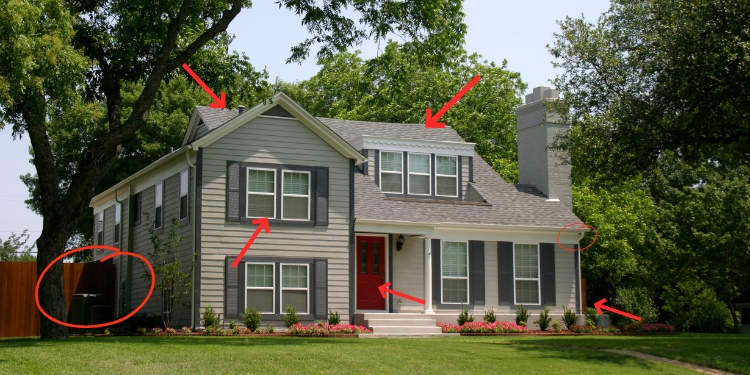

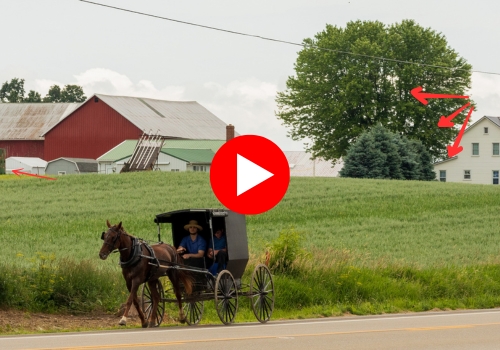
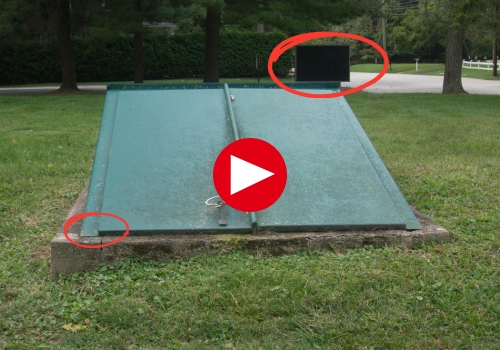
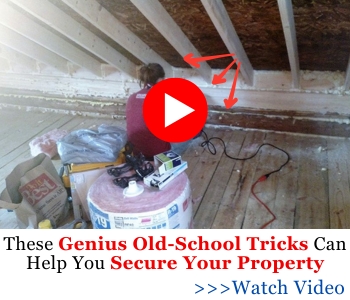






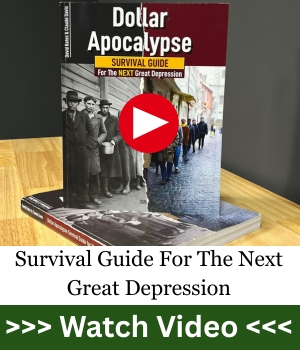





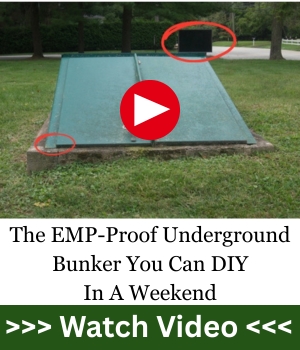
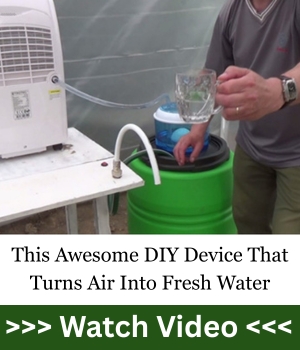





Never saw it mentioned in media coverage but the Minnesota lawmaker murdered in her home had some sort of ballistic glass in the front screen door. Because you could see rounds that didn’t penetrate stuck in the glass. Not sure if that was the house the police took under fire, or if the killer 1st tried to shoot them through the door. Somehow, he gained entry and finished the couple off. Rather than ‘bullet proof’ my house my plan is to exfil away from the attack, get some good cover, and take the attackers under fire. Prepper fantasy, of course, but a good idea to think about what could possibly happen. Like to work out a plan ahead of time for mutual fire support with my neighbors but they might think I’ve finally become certifiable.
That’s a chilling example, and yeah, situational awareness and planning for movement can be just as important as fortifying the structure itself. It’s not always about hunkering down like you’re in a vault.
Sometimes the smarter move is to break contact, regroup, and defend from a better position. And you’re definitely not crazy for thinking about mutual fire support with neighbors. If more folks did that kind of planning, we’d all be a lot better off when things go sideways.
Hello all: Thanks for the post, Matt. Below are a couple addition points on securing a structure and bullet proofing you may want to consider.
– use astragals or mullions to cover the cracks between the edges of your doors and the frame of the door. These will make it more difficult to get a crowbar between the door space and frame if someone should try and pry the door open. A partial astragal is sometimes used just to cover the area of the door latch, but I would suggest the astragal or mullion be the full length of the space between the edge of the door and the frame.
– use security hinges on doors. In brief, this is a hinge that has a couple extra holes drilled in the part of the hinge that fastens to the door frame. Those extra holes are filled with metal pins attached to the other side of the hinge when the door is closed. This can keep the door in place even if the hinge pins are cut off or removed.
– If you are depending on concrete blocks to help bullet proof your house or other structure, I would suggest filling the voids with concrete as you lay up the walls. Something as small as say the American 180 .22 Cal machine gun can tear a cinder or concrete block wall apart in a matter of seconds. The voids of these blocks filled with concrete may stop or slow that process.
– An AR-15 round will penetrate up to half an inch of steel unless it is hardened by heat processing. I had some cold rolled steel plates and a steel bust made of 1/8-3/16th inch steel plate for targets. I asked the folks at the range only to use pistol rounds on the targets, but one overzealous friend shot the bust with an AR-15 and the bullet went through it like hot butter.
– We did several tests on different material and with different caliber bullets and found sandbags to be the best for stopping incoming rounds. Thought should be given to making the sandbag barriers a double thickness if you are expecting a .50 Cal or larger round might be used against your defensive position.
r/Jeff
Steel core bullets matter for penetration, will definitely penetrate thicker materials than lead core. Block (CMU’s) poured solid with grout would make a difference, but the weak part would still be along the vertical mortar lines. My red neck engineering plan is to stack two rows of firewood along the inside of the house exterior walls. Been saving livestock feed bags for years to be placed as sand bags if ever needed. The firewood idea probably wouldn’t stop a bullet, but it would lessen the impact into soft body armor a bit.
Well, shiver me timbers….
Jeff, this is pure gold. Appreciate the time you took to lay this out!
Thanks! r/Jeff
Well , Very Expensive, Not so Easy to complete as listed
Great Article though
Might as well be in fort knox or bank vault as to live like this
Use Common sense for the area and enviornment you live in .
build levels of stops for whoever is coming in .
also , did not mention escape routes or access panels , hiden Stowa way compartments with exit means .
If I were this rich and had the money to go to this level , then I would set up perimeter defenses so they did not get to the home. and if i had this much access to money to complete the list as stated
I would set barriers and walls in place with escape tunels for leaving in a hurry
Cameras, Alrm sensors, and Dogs , Lites , other means of protection .
Well I dont think this is living common sense , IT is living Fear and waiting for the event
Trust God, Believe God , Read Gods word The Bible , and Ask for Gods wisdom so mankind will stay away or you can minister on your way out .
I did a bunch of contract work on H.R. Perot’s estate back in the 90s. It was 10 acres in the heart of north Dallas. Surrounded by an 8′ high brick and block wall. Lots of video and infrared coverage both sides of the wall. 1 gate, solid steel and wood, electrically operated from the security post, plus a few locked sally ports. The drive was about 50 yards, straight to the security post which was ballistic glass and always manned by a couple of his special forces guys. Sniper rifle zeroed on the gate. Usually about a dozen private guards roaming the grounds, Delta and Green Beret. When he ran for President the ground force was augmented and he brought in a Huey to run security sweeps around the neighborhood, gun door off, observer on a strap leaning out the door. Man, that is billion dollar security. Unlike Bush and Cheney he didn’t travel in a caravan of black SUVs, just drove himself around in some kind of car so plain I can’t remember the make. I’d be out there working with my crew of knuckleheads and he’d stop, get out, pass the time of day with us and head on down the road. Never be another man like him.
Good point. These kinds of upgrades aren’t cheap or easy, and not everyone lives in an area where full fortification makes sense. Layered defenses, early warning systems, and escape options can go a long way without going full Fort Knox.
And yes, trusting in God is part of it too. Faith and preparedness aren’t mutually exclusive – in fact, I’d say one supports the other. Preparing gives us the ability to protect and serve others when the time comes.
It’s not very practical as a retrofit, but if you have a brick or stone veneer on a typical framed house it is bound to be a step in the right direction. Mine is stone and goes halfway up the walls. Just one more reason I like my 1950s home over what is being built these days. My front door keeps the neighborhood stray cat out and that’s about all. Like most everyone, that’s one I need to work on.
Indeed, older homes were often built with sturdier materials, and that can give you a head start in hardening a structure.
Even stone veneer halfway up is better than a lot of modern siding.
And you’re right, doors are usually the weakest link. Reinforcing those, even with something as basic as a steel core or layered panel, can make a huge difference without a major retrofit.
There is a very inexpensive way to bullet proof a room or rooms
. I saw this on Mythbusters. Up front: I fired a 45acp from 3′ and it went straight through our concrete log siding. Next I repeated the experiment with a 3″ bundle of paper behind the siding. The 45acp slug was mangled in the middle of the paper. It didn’t even make it to the end of the paper. If the staff would like me too I can write an article on how to do this. As an added bonus it makes an excellent insulation:)